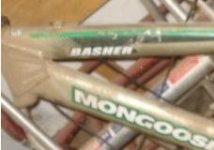One way of making a freewheel between motor and pedals is to use an IGH that has room on it's input shaft for two chainrings. One, for the pedals, gets a freewheel. The other, for the motor, does not need a freewheel but you could add one if there's room and need.Cargo_Tom said:Amberwolf: A mid-drive system might end up being needed. I am not too keen on the stokemonkey system, as I'd prefer a freewheel between the motor and the pedals (or I'd go nuts). The Urbancommuter setup spinningmagnets mentioned in one of his cargo posts seems like a good contender, but I'd need to tweak it for a non-longtail system. Hiding it inside the cargo box would be ultra stealthy. Hmmmm.
If you have no motor freewheel, and the IGH does not freewheel internally, then you also have regen braking available (which can indeed be helpful slowing from higher speeds with a load!). I recommend a perfectly-straight loop chainline for doing regen, without tensioners and such (using motor position to tension the chain).
Doing the above means two chainlines, one for pedals and one for motor, and the motor could be placed wherever is convenient for you and it and chain routing, but right in that triangle between your knees is still the best place, with a "box" around the whole thing for stealth and weather-proofing (and keeping bits of you out of the chains).
Other motors like powerchair motors could even be installed *under* the bike, below the cranks, with the output of the right-angle gearbox feeding the wheel from underneath. I did something like that for CrazyBike2's original road-tested drivetrain. But most of the cheap-and-easily-available-used ones are brushed motors, and most of the brushless ones I've run across are huge direct-drive monsters weighing 20-30lbs! (I have one of these, too, which will probably be tested on the new bike driving an IGH).
There are lots of ways to do a middrive.
I've also used a hubmotor on the front wheel of CrazyBike2, and I'd say that it's been much more reliable than my built-from-junk middrive, but if I were to go back and build the powerchair middrive *correctly*, I would probably see equal reliability and notably higher efficiency (given the losses in brushed vs brushless) in my frequent start-stop usage on the heavy bike, especially when cargo hauling (commonly multiple large dog food bags, but often enough other heavy and awkward things).
Fortunatley I don't have to deal with hills *and* cargo, but if I did, a middrive is definitely the way I'd approach it.



